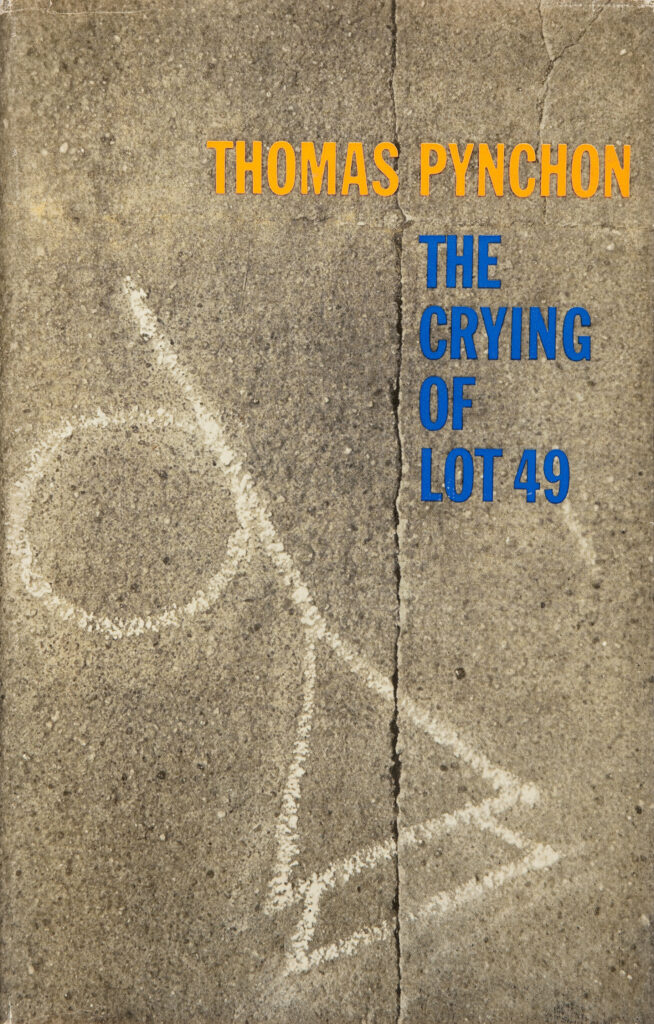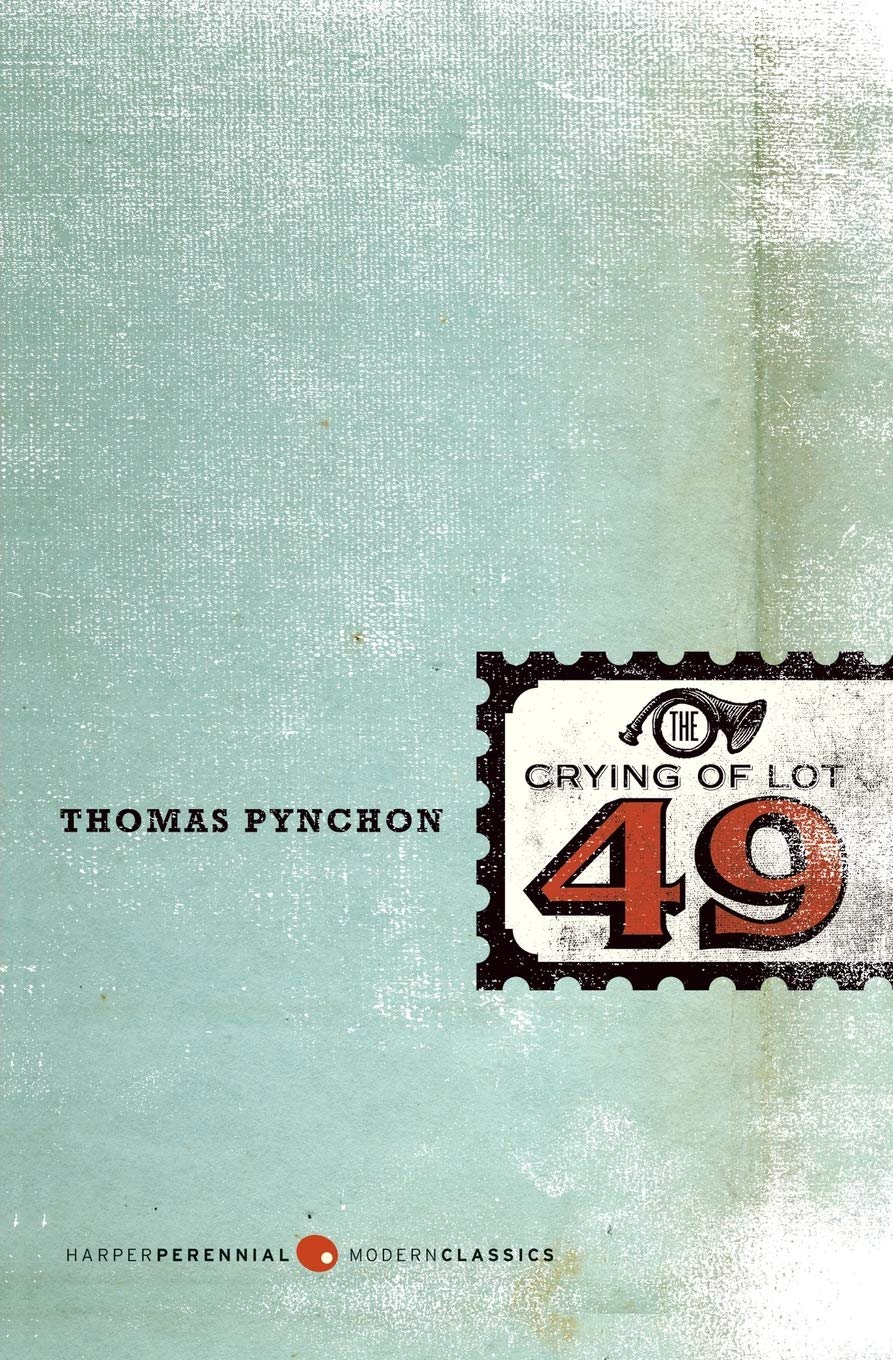Pynchon Works: “The Crying of Lot 49”

Shall I project a world?
Thomas Pynchon’s The Crying of Lot 49
The Crying of Lot 49
J. B. Lippincott & Co., 1965.
Short, straightforward in narrative, and relatively linear in plot, The Crying of Lot 49 is considered by many to be Pynchon’s most accessible novel, and is therefore the one most commonly read, whether to fulfill the syllabus of a literature course or simply for pleasure. Nevertheless, it remains an enigmatic book that has been analyzed, discussed, and dissected almost as much as Gravity’s Rainbow. Even thirty years after publication it is still considered quite open to interpretation: some critics feel that it is ultimately meaningless and impossible to interpret, while others have found it to be rather cohesive, and even possessed by a set of ethical directives. Others, as J. Grant remarks, perhaps mindful of Oedipa’s notion that “excluded middles” are “bad shit,” have worked to find a functional interface between book and reader. All, however, agree that it is a vital work and a postmodern classic.
So what’s it all about?
The plot is rather simple. Oedipa Maas, a practical but restless woman married to a disc jockey, finds out that she has been made the executor of the estate of Pierce Invararity, a rich industrialist and the subject of a past fling. Confused but curious, she travels to San Narciso (a mythologized city in California) in order to carry out her duties. But almost at once she discovers that things are not what they seem. Soon she begins to suspect that she has stumbled upon a conspiracy—a vast, perhaps global conspiracy that involves Inverarity, his lawyers, the employees of Yoyodyne—and maybe even her husband and analyst. Driven by a will she hardly knew she possessed, and haunted by an impending sense of revelation, Oedipa decides to penetrate to the heart of the enigma. Eventually she merges into an underworld of broken, lonely souls, cynical playwrights and mysterious booksellers; a shadowy “alternate America” where coincidences accumulate suspiciously and the postal system takes on sinister overtones. Is it coincidence or conspiracy—or a cruel joke? And as the mystery deepens, she edges perilously close to a downward spiral of self-doubt and paranoia…
On the most basic level, The Crying of Lot 49 can be read as an intellectual thriller or a postmodern mystery. The narrative is consistent, the plot moves along rapidly, and the point of view remains stable. But a reading confined to this surface level does little justice to either the book or the reader, and may lead to much frustration rather than enjoyment. The text is almost completely “open,” and readers who are looking for a single interpretation are setting themselves up for failure. Even after several readings one finds that the novel deliberately evades solutions—indeed, this is one of the hallmarks of Pynchon’s unique style. Like a classical physicist who attempts to explain quantum-level observations with Newtonian mechanics, a reader who demands certainty will find the structure of the work itself acting to confound and dismiss him. Almost every question raised by the novel seems to generate two contradictory solutions; and almost every perception experienced by its characters is clouded by a built-in Uncertainty Principle. The book must be approached from an open, more “modern” perspective: like a quantum physicist’s view of light, we must hold two mutually exclusive ideas at once until an observation conjures a “reality” into being; and unlike Oedipa, we may never make that ultimate observation. Therefore, at the core level, the book poses the question, what is reality?—something we project in our head, or is it something that stands immutable? As Oedipa grapples with these questions—at the risk of her sanity—the evasive structure of the novel forces the reader to confront them as well. Her plight becomes our plight; what is denied to her by the power structure of San Narciso is denied to us by the novel structure of Thomas Pynchon. As with Schrödinger’s fabled cat, The Crying of Lot 49 exists inside a Black Box, and Pynchon refuses to pop the lid and resolve our uncertainty.
Spermatikos Logos Resources
Offsite Resources
Selected Reviews
Poirier, Richard
From the May 1, 1966 New York Times, this is a very insightful review from the chairman of the English Department of Rutgers University.
 0
0 


